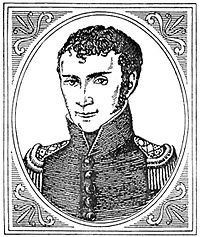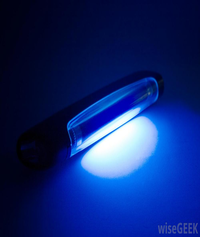Johann Wilhelm Ritter
Johann Wilhelm Ritter was a German chemist and physicist (16 December 1776 - 23 January 1810) who discovered Ultraviolet (UV) light.

Life and Discovery
Born and raised in a wealthy German family, Ritter was inspired with science when he was 14 years old. He self-taught himself to become a scientist and made many experimental researches on chemistry, electricity, and waves. His first scientific research had to do with the galvanic phenomena. Around 1800, William Nicholson and Anthony Carlisle discovered that water could be decomposed into oxygen and hydrogen by electricity. Few years later, Ritter discovered the same result, independently, which led to the discovery of the process of electroplating.
Many of his researches were inspired by a search for polarities in nature and relationship between those forces of nature. When William Herschel discovered "heat ray" or infrared radiation, Ritter was inspired to research the opposite or cooling radiation at the end of the visible spectrum. After multiple trials and errors, he noticed that silver chloride transformed faster from white to black when it was placed close to its violet end. The rays he found were later called as ultraviolet radiation.

After his discovery of ultraviolet light, Ritter progressed to do more research on electrical experiments, which led to his discovery of the process of electroplating. Through this, he invented the dry cell battery and developed a storage battery.
Ritter had some of his researches that were not confirmed by other researchers. For example, he stated that the Earth had electric poles that could be detected by the motion of a bimetallic needle. Also, he reported that he could split water into hydrogen and oxygen by using series of magnets, instead of Volta's piles.
Later in his years, he married in 1804 and had four children. Through financial difficulties and weak health, he passed away in 1810.
His Legacy
We frequently use ultraviolet light in many different ways. For medicine, ultraviolet ray is used to disinfect equipment from bacteria and viruses. Through astronomy, ultraviolet light is used to study warmer objects in space and be able to see space in different way.
External Links
See also
Other well known scientists,
References
1. http://coolcosmos.ipac.caltech.edu/cosmic_classroom/classroom_activities/ritter_bio.html
2. https://en.wikipedia.org/wiki/Johann_Wilhelm_Ritter
3. http://www.britannica.com/biography/Johann-Wilhelm-Ritter